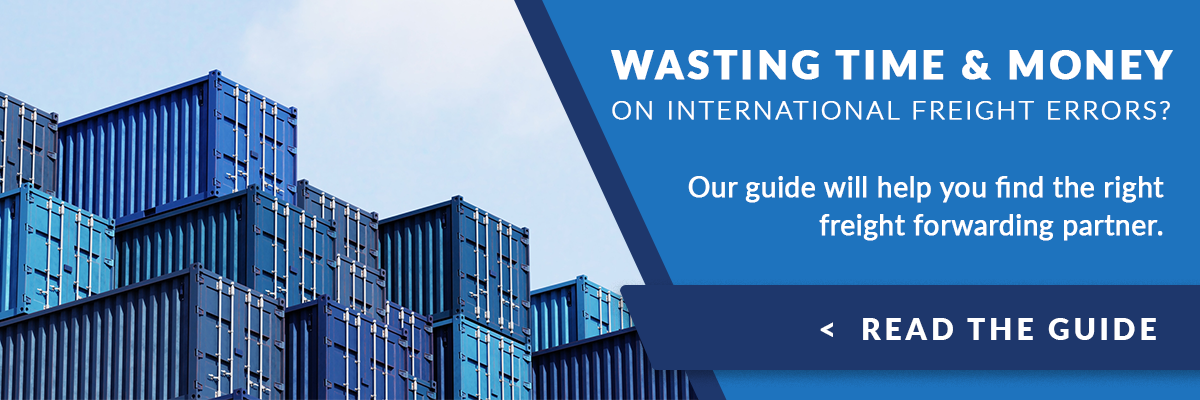You've got a fantastic trade compliance program, and now you want to improve your efforts even more. You can do that! The voluntary Importer Self Assessment (ISA) program can help you to reduce international trade risks further and provide actual benefits
In 2002, the program was developed as a joint effort between CBP and the trade community. It was designed explicitly for U.S. importers to conduct assessments of their compliance with CBP laws and regulations. The program helps an importer
As a mutually beneficial program for the importer and CBP it demonstrates a partnership, and for the importer, it assumes the responsibility to manage and monitor your compliance with Customs trade laws and regulations.

The ISA Program Has Tangible Benefits for Importers
When eligible importers are ready to engage in this program there are many benefits they may receive:
- CBP guidance on:
- Compliance
- Risk assessments
- Internal controls
- CBP audit trails and more
- You can apply for ISA coverage on multiple business units at the time of application
- You will be removed from the Regulatory Audit's (RA) audit pool for:
- Focused assessments
- Drawbacks (if requested as part of the ISA program)
- Foreign Trade Zones (if requested as part of the ISA program)
- Gain access to key liaisons and assigned a national account manager
- Entitled to free entry summary trade data with analysis support through the use of the Automated Commercial Environment (ACE)
- Prior disclosures (PD) - this one is hugely beneficial
- If CBP becomes aware of errors in violation of 19 U.S.C. 1952 or 1953a, CBP will provide a written notice AND allow you 30 days to submit a PD
- Note: it does not apply if you are already a subject of an ongoing investigation or fraudulent case
- If civil penalties or liquidated damages are assessed, the importer's participation in ISA is considered as a mitigating factor in the disposition of the case
- Greater business certainty due to internal controls to ensure compliant transactions
- Industry-specific benefits will vary
The ISA Process in Short
- Application submitted with Memorandum Of Understanding (MOU) and Questionnaire
- CBP Reviews the application
- CBP schedules a formal meeting
- CBP establishes partnership by signing MOU
What Makes a Business Eligible for ISA?
For a business to be eligible for the ISA program, they must be:
- A known business to CBP and have imported goods during the previous two years;
- Physically established, located, and managed within the US

What is Required for a Business to Participate?
Besides the two primary eligibility requirements, there are several other steps, or additional programs, that must come first:
- You are required to be
CTPAT certified - Complete the MOU and Questionnaire
- Agree to comply with all applicable CBP laws and regulations
- Internal control systems are documented to provide reasonable assurance of compliance with US trade laws and regulations
- Conduct annual risk assessments to identify areas at risk of non-compliance with CBP laws and regulations
- As risk areas are identified, development and execution of yearly self-testing is required
- Develop a corrective action plan in response to errors and internal control weaknesses:
- Must maintain self-testing results for three years and be readily available to CBP upon request
- Make necessary adjustments to internal controls
- Maintain an audit trail that includes financial records to CBP declarations, or
- Provide an alternate system that ensures accurate values are reported to Customs
- Make appropriate disclosures
- Submit an annual notification letter to CBP
- Notify Customs of significant organizational changes promptly
There are two ways that you can meet the ISA program requirements.
- Through using your internal resources, or
- Through partnering with an objective third party - like your Customs broker
Using a third-party is a means of exercising reasonable care and due diligence.
What Happens After You Submit Your ISA Application?
After submission, the Customs ISA team reviews your information and internal controls to determine your readiness. Have you completed all of the necessary steps and are prepared for acceptance?
Internal controls are assessed as a group by:
- Evaluating your understanding of the processes and flow of data through the entry process
- Evaluate what can go wrong to identify risk areas
- Deciding whether the controls are sufficient to address problem areas
- Evaluating your questionnaire responses and policies and procedures
Following the determination of readiness, the ISA team will conduct a risk assessment that includes your import related activities of all importer of record number(s) on the MOU.
Where they will look at the company's history of trade compliance, most specifically the following areas:
- Compliance measurement data
- Previous penalty actions
- Previous enforcement actions
- Regulatory audits
- Other applicable information
Evaluation of risk exposure will include:
- Imports from specific suspect manufacturers or suppliers
- Imports that are subject to quota, visa, antidumping, or other priority trade issues
- Large volumes of imports under special duty provisions or trade programs
- Large quantities of imports under complex tariff classifications
Following these assessments and tests for risk exposure, the ISA team will schedule an Application Review Meeting (ARM). This meeting will explain the evaluation process and provide you with essential risk areas. At the meeting, they will walk you through up to five entry numbers. Don't worry; you'll know the numbers in advance and have time to prepare.
What Information Do You Need to Prepare for the ARM?
There is a considerable amount of detail to be prepared for in advance of the scheduled ARM. These include the following:
- Outline of your corporate structure and line of authority
- Demonstrate your company's commitment to compliance
- Provide an overview of your Customs department and staff
- Demonstrate your relationship with your Customs brokers
- Proof of any Customs related training
- Using the ISA team identified areas of risk:
- Demonstrate you have documented internal control processes and procedures for handling these issues
- Walk the team through the entire entry process using the entry numbers they provided in advance
- Demonstrate each control that is in place
- Ensure the information provided to CBP was correct and complete
- Discuss your scope and methodology of a self-testing plan by:
- Identifying your risk assessment steps and frequency of monitoring activity
- Explain your annual plan including:
- The layout
- Sampling and testing procedures
- Reporting format
- Corrective action development
- Implementation
This meeting is lengthy, so you'll want to allow time for the ISA team to discuss your presented information separately. Be prepared for a potential tour of your facility, especially if it is critical to demonstrating controls and procedures.
At the end of the meeting, the ISA team will provide you with their preliminary feedback and may ask for additional or clarifying information. Once this is done, you are onto the next steps.
The ISA Application Review Meeting is Over - Now What?
The ISA team leader will provide a complete review of the ISA report including a synopsis of the full evaluation and address any issues of concern to the ISA Review Board.
The ISA Review Board meets monthly and is made up of Immigration and Customs Enforcement, the Offices of Regulations & Rulings, Field Operations, and International Trade.
Applicants then are formally notified of the Review Board's decision. If accepted, you receive your certificate, an executed MOU, and a formal letter of acceptance.
We've Been Accepted to the ISA Program! What's Next?
Of
Annually, you'll need to submit to CBP a written annual notification that you are continuing to meet the requirements of the program, and send it within 30 days of your anniversary date of acceptance. Mark this date on your calendar with a reminder to prepare your annual notification.
Noted earlier, you will also need to report to Customs significant changes to the company's structure within 90 days of the change. Significant company structure changes include:
- Reorganization
- Mergers and Acquisitions
After five years in the program without issues, you may be asked to a Continuation Review Meeting (CRM) to determine whether you are continuing to fulfill the program requirements.
Now that you know what to expect, and see the benefits of the voluntary Importer Self-Assessment program, you can start moving goods faster and more compliantly. Together, with CBP, you can achieve reduced risk to your trade compliance program and level-up your team's efforts.
Now is an excellent time to get on-board with ISA as CBP and the trade community discuss and develop trusted trader programs for importers to take advantage of the benefits and prepare for rapid changes to the trade environment.



